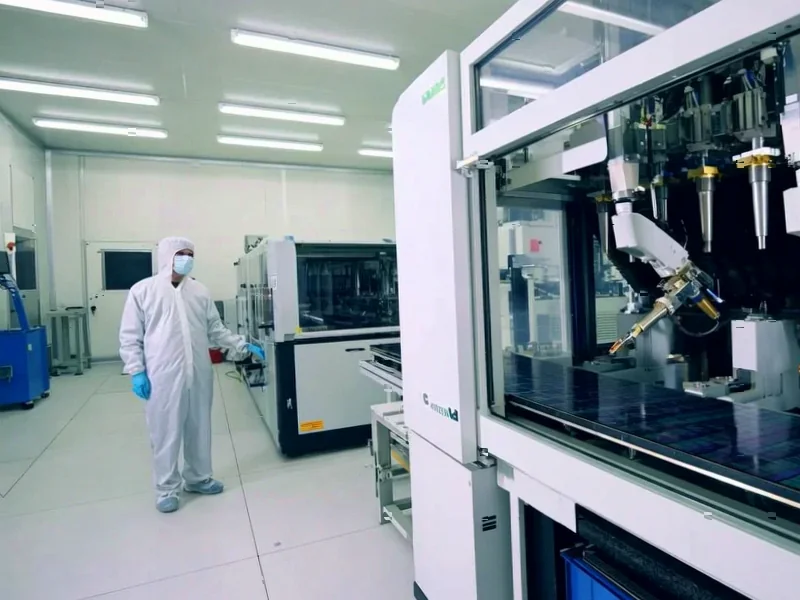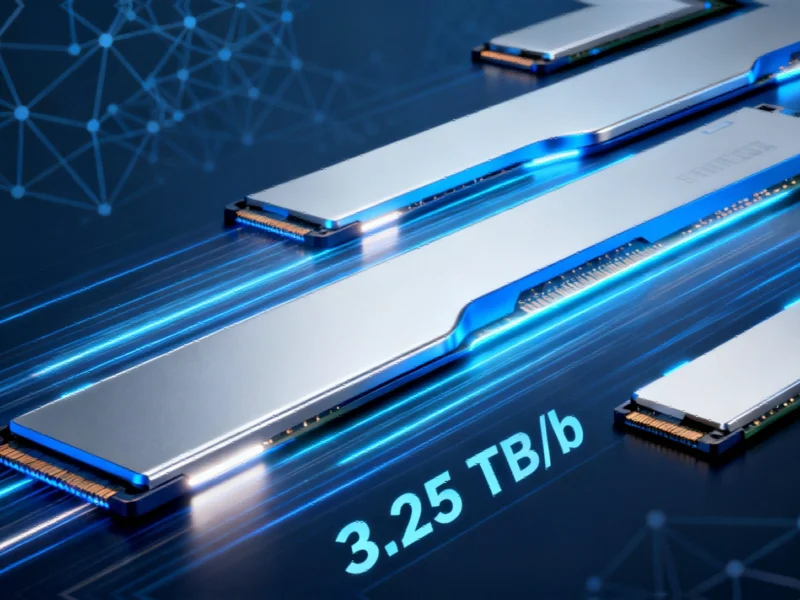According to CRN, at Nvidia’s GTC DC 2025 event last week, CEO Jensen Huang emphasized strong alignment with President Trump on U.S. “reindustrialization” and manufacturing policy, while announcing a $1 billion investment in Nokia and new partnerships with Palantir, CrowdStrike, Oracle, and HPE. The Santa Clara-based company provided significant new financial disclosures reflecting surging demand for its Blackwell products and upcoming Rubin GPU launch, with Huang specifically crediting Trump’s “pro-energy initiative” for enabling AI industry growth and stating “we could have been in a bad situation” without these policies. The event, marking Huang’s first keynote at the Washington offshoot of Nvidia’s flagship GTC conference, positioned the AI infrastructure giant as a key beneficiary of current administration policies aimed at bringing manufacturing back to the United States. This strategic positioning suggests Nvidia is preparing for a new era of industrial policy-driven growth.
The Manufacturing Mandate: Nvidia’s Calculated Bet
Nvidia’s explicit alignment with Trump administration policies represents a significant departure from the traditionally apolitical stance of major tech companies. Huang’s direct praise for energy policies and manufacturing initiatives signals that Nvidia recognizes the next phase of AI infrastructure growth will be heavily influenced by government policy and industrial strategy. This isn’t just about tax incentives or regulatory relief—it’s about positioning Nvidia as essential to national economic competitiveness. The company appears to be betting that the coming years will see massive public-private partnerships in advanced manufacturing, and they want to be at the center of that ecosystem. This strategic pivot could reshape how other tech giants approach government relations, moving from cautious engagement to active partnership in industrial policy.
The AI Infrastructure Build-Out Accelerates
The disclosed $1 billion Nokia investment and partnership expansion with Oracle and HPE reveals Nvidia’s comprehensive strategy to dominate the entire AI infrastructure stack. We’re witnessing the emergence of what I call “AI industrial complexes”—vertically integrated ecosystems where compute, networking, software, and services converge. The Nokia partnership specifically targets telecommunications infrastructure, suggesting Nvidia sees 5G/6G networks as critical distribution channels for AI capabilities. This goes beyond selling GPUs—it’s about creating an entire economic architecture where Nvidia technology becomes the foundation for next-generation industrial applications. The timing is crucial: as companies complete their initial AI experimentation phases, they’re now moving toward production-scale deployments requiring robust, integrated infrastructure.
The Unspoken Challenge: Power Constraints
Huang’s emphasis on energy policy highlights what may become the single biggest constraint on AI growth: power availability. Current AI data centers consume exponentially more energy than traditional computing infrastructure, and the scaling requirements for next-generation models are staggering. The industry is heading toward a fundamental reckoning where energy availability, not chip performance, could become the limiting factor. Nvidia’s alignment with pro-energy policies suggests they’re positioning for what comes next: massive investment in power generation and distribution specifically optimized for AI workloads. We’re likely to see specialized AI power plants, novel cooling solutions for high-density computing, and potentially even direct partnerships between tech companies and energy providers. The companies that solve the energy challenge will dominate the next decade of AI development.
Geopolitical Reshoring and Its Consequences
The focus on bringing manufacturing back to the U.S. represents more than just economic policy—it’s a fundamental rethinking of global technology supply chains in an era of heightened geopolitical tensions. Nvidia’s positioning suggests they anticipate continued fragmentation of global technology markets and are preparing for a world where regional technology stacks become the norm. This has profound implications for everything from chip design to software development. Companies that successfully navigate this transition will need to maintain global scale while operating within increasingly distinct regional ecosystems. The HPE partnership expansion specifically targets enterprise adoption, indicating Nvidia sees domestic manufacturing and industrial companies as the next major growth vector beyond cloud providers and tech giants.
The Emerging Competitive Battlefield
Nvidia’s partnership strategy with Palantir and CrowdStrike reveals their ambition to dominate the intersection of AI, security, and government applications. This isn’t just about commercial markets—it’s about establishing Nvidia as the foundational technology for national security and critical infrastructure. The competitive implications are substantial: we’re likely to see intensified competition between Nvidia’s ecosystem and alternatives from companies like AMD, Intel, and various cloud providers offering their own AI solutions. More importantly, this signals the beginning of ecosystem wars where the value isn’t just in individual components but in integrated solutions spanning hardware, software, and services. The companies that can deliver complete, secure, scalable AI infrastructure stacks will capture disproportionate value in the coming years.
The bottom line: Nvidia’s GTC DC event wasn’t just another technology conference—it was a declaration of strategic intent. The company is positioning itself not just as a technology provider but as an essential partner in national economic and security strategy. This represents a fundamental shift in how technology companies engage with government and industrial policy, with implications that will reverberate across the entire tech sector for years to come.




